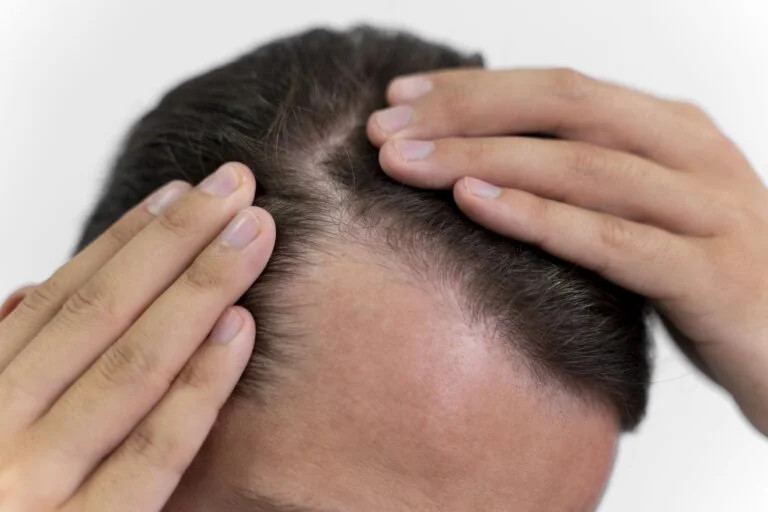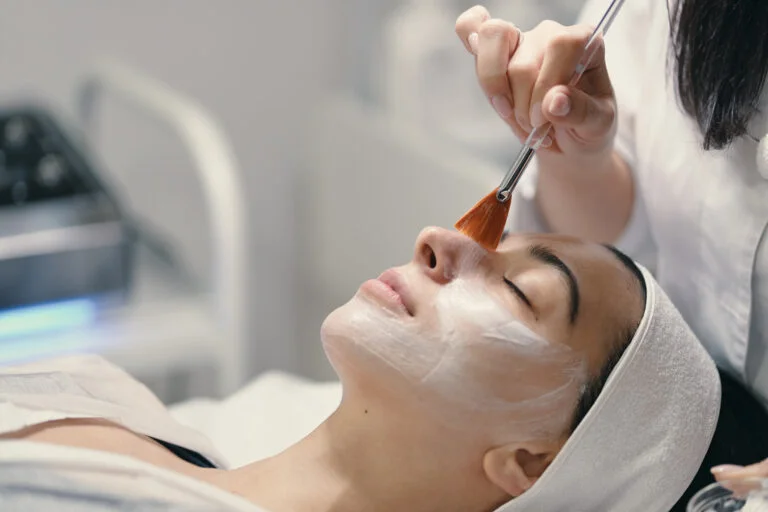Chemical peels are a popular cosmetic procedure used to improve the texture and appearance of the skin. However, when it comes to skin of color (Asian Skin, African-American Skin, Black Skin, Brown Skin), it is crucial to approach chemical peels with care and precision to avoid potential complications. This comprehensive guide explores the benefits, safety considerations, and best practices for chemical peels for skin of color, helping you achieve smoother, brighter skin effectively and safely.
Understanding Chemical Peels
During a chemical peel, a chemical solution is applied to the skin, causing the outermost layers to exfoliate and finally peel off. This process reveals new, regenerated skin that is typically smoother and more even in tone. Chemical peels can address various skin concerns, including acne, hyperpigmentation, melasma, fine lines, and uneven texture.
Benefits of Chemical Peels for Skin of Color
For individuals with skin of color, chemical peels can offer several benefits when performed correctly:
Even Skin Tone: Chemical peels can help reduce hyperpigmentation and dark spots, resulting in a more uniform complexion.
Acne Treatment: Peels can help unclog pores, reduce acne breakouts, and minimize acne scars.
Improved Texture: By removing dead skin cells, chemical peels can make the skin smoother and more refined.
Brightened Complexion: Peels can enhance skin radiance and give a healthy glow by removing dull, damaged skin.
Types of Chemical Peels Suitable for Skin of Color
For skin of color to be treated safely and effectively, the proper kind of chemical peel must be chosen. Here are the most commonly recommended types:
Superficial Peels
Superficial peels, also known as light peels, are the mildest type and are generally safe for all skin types, including skin of color. They use mild acids such as alpha hydroxy acids (AHAs) like glycolic acid or lactic acid and beta hydroxy acids (BHAs) like salicylic acid.
Glycolic Acid Peels: Effective for treating mild hyperpigmentation, fine lines, and acne. Glycolic acid penetrates the outermost layer of the skin, providing gentle exfoliation.
Lactic Acid Peels: Ideal for sensitive skin, lactic acid peels hydrate and exfoliate the skin, improving texture and tone.
Salicylic Acid Peels: Best for acne-prone skin, salicylic acid peels help clear clogged pores and reduce inflammation.
Medium Peels
Medium peels penetrate deeper into the skin and are typically used to treat more pronounced skin issues. They often use trichloroacetic acid (TCA).
TCA Peels: Effective for treating moderate hyperpigmentation, acne scars, and wrinkles. However, TCA peels should be used with caution on skin of color to avoid post-inflammatory hyperpigmentation (PIH).
Deep Peels
Deep peels provide the most dramatic results but also carry the highest risk, especially for skin of color. They use stronger acids like phenol.
Phenol Peels: Not generally recommended for skin of color due to the high risk of scarring and hyperpigmentation.
Safety Considerations for Chemical Peels on Skin of Color
Safety is paramount when performing chemical peels on skin of color. Here are some key considerations to ensure a safe and effective treatment:
Choose an Experienced Professional
It is crucial to select a board-certified dermatologist or licensed skincare professional experienced in treating skin of color. They will have the knowledge and expertise to choose the appropriate peel and concentration for your skin type and concerns.
Pre-Treatment Preparation
Preparing the skin before a chemical peel can help minimize the risk of complications. This may include using skin-lightening agents such as hydroquinone or retinoids for several weeks before the peel to even out the skin tone and reduce the risk of PIH.
Start with a Patch Test
To find out how your skin will respond to the chemical peel, a patch test is essential. The professional will apply a small amount of the peel solution to a discrete area of your skin to check for adverse reactions.
Gradual Approach
Starting with a lower concentration of the peel and gradually increasing it over multiple sessions can help minimize the risk of complications and allow the skin to adjust.
Post-Treatment Care
Proper post-treatment care is crucial for avoiding complications and ensuring optimal results. This includes:
Sun Protection: Wearing broad-spectrum sunscreen with an SPF of 30 or higher is essential to protect the new, sensitive skin from UV damage and prevent hyperpigmentation.
Moisturization: Keeping the skin well-moisturized helps soothe and heal the skin after a peel.
Avoiding Harsh Products: For at least a week following the peel, avoid using abrasive skincare products like retinoids and exfoliants.
Potential Side Effects and Risks
While chemical peels can be safe for skin of color when performed correctly, there are potential side effects and risks to be aware of:
Post-Inflammatory Hyperpigmentation (PIH): Darkening of the skin in the treated area is a common risk for skin of color. Using proper pre- and post-treatment care can help minimize this risk.
Scarring: Chemical peels may, in rare cases, cause scarring. This risk is higher with deeper peels.
Infection: Although rare, infection can occur if the skin is not properly cared for after the peel. Success Stories and Testimonials
Hearing from individuals who have successfully undergone chemical peels can provide reassurance and insight. Here are a few success stories:
Maria’s Journey: Maria struggled with acne and hyperpigmentation for years. After a series of glycolic acid peels, she noticed a significant improvement in her skin’s texture and tone, with a reduction in dark spots.
David’s Experience: David had persistent acne scars that affected his confidence. With the help of salicylic acid peels, his skin became smoother, and his acne scars diminished, giving him a renewed sense of self-assurance.
Conclusion
For skin of color, chemical peels can be a very effective procedure in enhancing the texture and look of the skin. By choosing the right type of peel, working with an experienced professional, and following proper pre- and post-treatment care, individuals with skin of color can achieve safe and remarkable results. Whether addressing acne, hyperpigmentation, or uneven texture, chemical peels offer a path to smoother, brighter, and more radiant skin.
Dr. Stefan Weiss is an internationally renowned, board-certified dermatologist with over two and a half decades of experience providing his patients with the best non-invasive cosmetic treatment options. Dr. Weiss takes a holistic approach and embraces a less-is-more philosophy, creating customized skincare routines and treatment plans that cater to the unique concerns and aesthetic goals of his patients. He is consistently identified as one of the Top dermatologists for his dedication to his patients and expertise.
If you are an Asian or African-American patient who is tired of searching for ‘chemical peel skin of color’ and chemical peel black skin’, Dr. Stefan Weiss and the team at Trillium Medi Spa in Chapel Hill are experts in the application of chemical peels for skin of color patients. Contact the office today or call 919-710-8100 to book an appointment with the team at Trillium Med Spa in Chapel Hill and let them create a customized chemical peel treatment plan for you.








